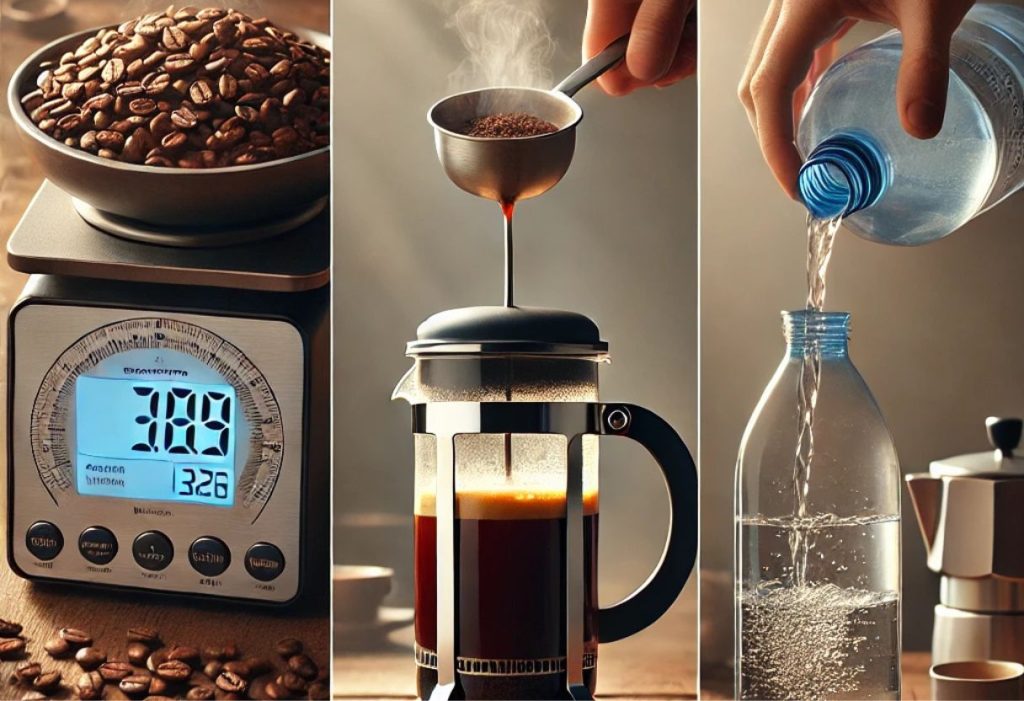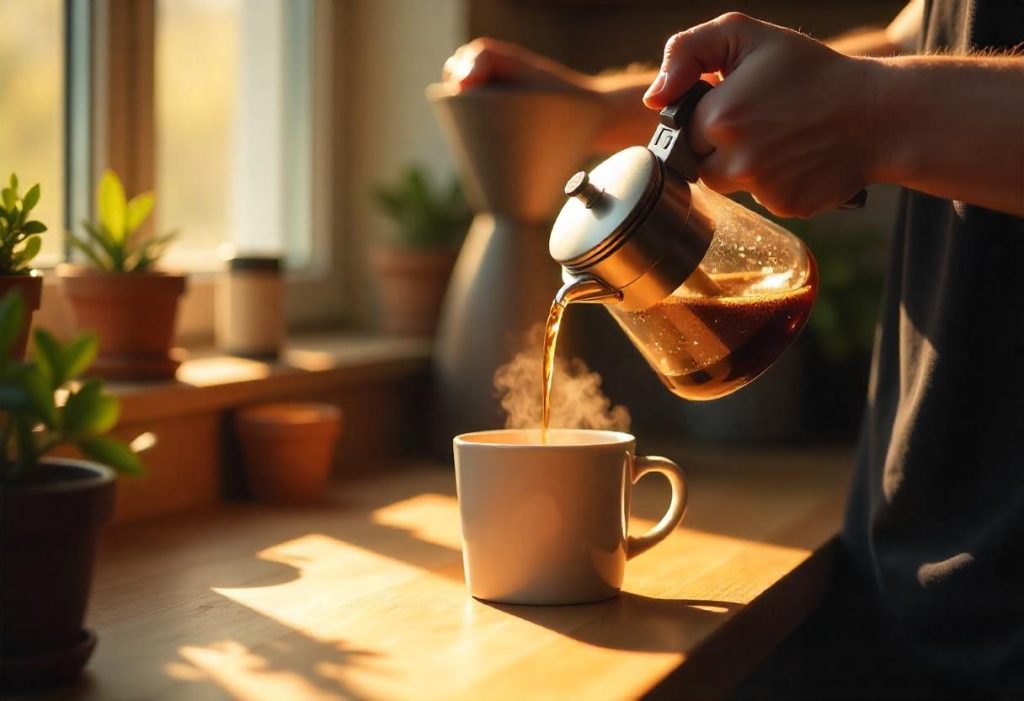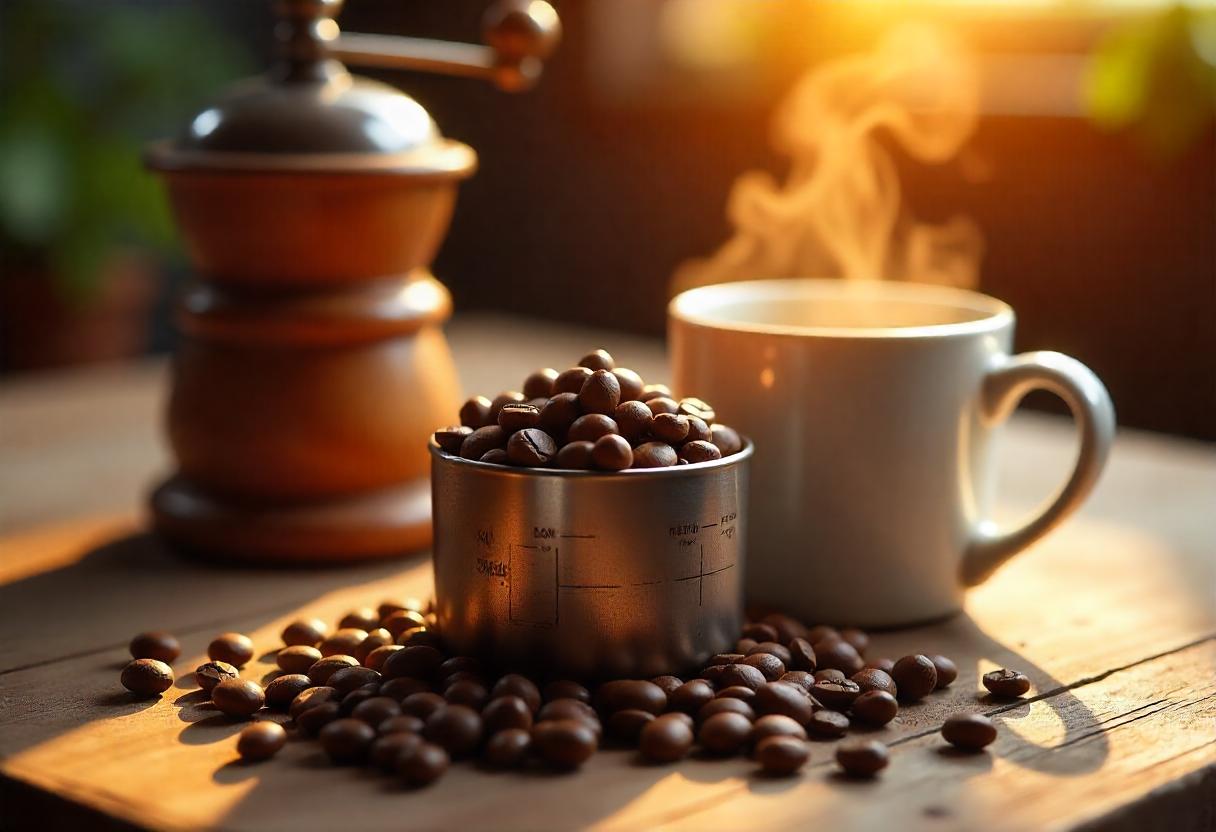Coffee is an essential part of many people’s daily routines. Whether you’re an early riser or someone who enjoys sipping throughout the day, the question of how many ounces in a cup of coffee is common among coffee drinkers. This article will break down everything you need to know, from understanding cup sizes to tips for brewing the perfect cup.
How Many Ounces in a Cup of Coffee? The Answer Explained
When it comes to coffee, it’s important to understand the standard measurements. In the United States, the typical cup of coffee contains 8 ounces of liquid. This measurement refers to a standard “coffee cup” size, which is used by most coffee machines and recipes. However, many people drink larger servings, especially when buying coffee from cafes or brewing it at home.
For example, when you order a “small” coffee at a café, it may contain 12 ounces or more, depending on the establishment. Understanding the difference between a cup of coffee and a “large” or “extra-large” cup can help you manage your caffeine intake more effectively.
Why Coffee Portion Sizes Vary
One of the reasons coffee portions vary is due to the type of coffee maker or brewing method you’re using. Espresso shots, for instance, contain far less liquid than a brewed cup of coffee, even though they pack a stronger flavor punch.
| Brewing Method | Typical Ounces per Cup |
| Drip Coffee Maker | 8-12 ounces |
| Espresso | 1-2 ounces per shot |
| French Press | 8-16 ounces |
| Pour-Over Coffee | 8-10 ounces |
Each brewing method impacts the flavor and strength of the coffee, so it’s essential to keep the serving size in mind when preparing your perfect cup.
The Health Benefits of Drinking Coffee
Before getting too caught up in how many ounces in a cup of coffee, it’s important to know why coffee is so loved. While it’s known for giving a caffeine boost, coffee also offers a range of health benefits when consumed in moderation.
1. Boosts Physical Performance
Drinking coffee can help improve physical performance by increasing adrenaline levels. This makes it a favorite among athletes and gym enthusiasts. A single cup of coffee can enhance endurance and reduce the perception of effort, allowing you to push harder during exercise.
2. Rich in Antioxidants
Coffee is packed with antioxidants, which can help protect cells from oxidative stress. These antioxidants can reduce the risk of chronic diseases like heart disease and diabetes.
3. Enhances Brain Function
The caffeine in coffee is a stimulant that can boost mental alertness, focus, and memory. A cup of coffee can help you stay sharp and alert, making it a great way to start the day or power through a long afternoon.
4. Supports Weight Loss
For those looking to lose weight, coffee can serve as a natural appetite suppressant. The caffeine in coffee increases metabolism and helps burn fat, making it an excellent addition to a weight management routine.
How to Brew the Perfect Cup of Coffee
Knowing how many ounces in a cup of coffee is only part of the equation. To truly enjoy your coffee, the brewing process plays a major role in achieving the best flavor. Here are some tips to help you brew the perfect cup.
1. Measure Your Coffee Correctly
A common mistake is not measuring the coffee grounds properly. For a standard 8-ounce cup of coffee, use 1 to 2 tablespoons of coffee grounds, depending on your desired strength.
2. Choose the Right Brewing Method
Different brewing methods yield different results. The most popular ones include drip coffee makers, French presses, and pour-over systems. Each has its own nuances and will affect the taste and strength of your cup of coffee.
3. Use Fresh, Filtered Water
Water makes up a large portion of your cup of coffee, so using clean, filtered water can make a significant difference. Fresh, high-quality water leads to a smoother, more balanced brew.

Credit by Freepik AI image generate
How to Control the Strength of Your Coffee
If you’re unsure about how strong you like your cup of coffee, it’s easy to adjust. The strength of your coffee depends on the ratio of coffee grounds to water. A stronger cup can be achieved by adding more coffee grounds, while a milder brew requires fewer grounds.
The Impact of Different Coffee Sizes
While a cup of coffee is usually 8 ounces, many people opt for larger sizes when ordering at coffee shops. But what do these extra ounces mean for your caffeine intake? Here’s how the typical sizes break down:
| Coffee Size | Ounces of Coffee | Caffeine Content |
| Small (Short) | 8 ounces | 80 mg |
| Medium (Tall) | 12 ounces | 120 mg |
| Large (Grande) | 16 ounces | 160 mg |
| Extra-Large (Venti) | 20 ounces | 200 mg |
The caffeine content increases with the volume, so it’s important to be mindful of how much you consume, especially if you’re sensitive to caffeine.
Tips for Choosing the Best Coffee for Your Cup of Coffee
With so many types of coffee beans and blends, it can be tough to know where to start. Here are a few tips for choosing the best coffee for your cup of coffee:
- Light Roast vs. Dark Roast: Light roast coffee retains more of the beans’ natural flavors, while dark roast offers a bolder, richer taste. Choose based on your flavor preferences.
- Ground Size Matters: Different brewing methods require different grind sizes. For example, French presses need a coarse grind, while espresso requires a fine grind.
- Single-Origin vs. Blends: Single-origin coffee comes from a specific region and offers unique flavors. Blends, on the other hand, combine beans from various regions for a balanced taste.

Credit by Freepik AI image generate
How to Drink Your Coffee
Now that you’ve got the perfect cup of coffee, the next step is figuring out how to enjoy it. Many people like their coffee black, while others prefer to add milk, cream, sugar, or flavored syrups. Here are a few options:
1. Black Coffee
For purists, black coffee is the ultimate choice. This allows you to fully appreciate the flavor profile of the coffee without any added ingredients.
2. Milk or Cream
Adding milk or cream can soften the taste and provide a smooth, velvety texture. You can also experiment with alternatives like almond milk or oat milk for a dairy-free option.
3. Sweeteners and Flavors
For those who enjoy a little sweetness in their coffee, sugar, syrups, or flavored extracts like vanilla or hazelnut can elevate the flavor.
Conclusion: How Many Ounces in a Cup of Coffee Is Just the Beginning
Understanding how many ounces in a cup of coffee is just the starting point for truly appreciating the art of coffee. From choosing the right brewing method to selecting your favorite beans, there’s a world of possibilities to explore.Whether you’re brewing a standard 8-ounce cup of coffee at home or indulging in a larger-sized coffee from your local café, remember to savor the flavor and enjoy the benefits that coffee offers. With these tips and insights, you’ll be well on your way to becoming a true coffee connoisseur!
How many ounces are in a standard cup of coffee?
A standard cup of coffee in the United States typically contains 8 ounces of liquid. This is the common measurement used in most coffee makers and recipes.
Why do coffee shops serve larger sizes?
Coffee shops often serve larger cups, such as 12-ounce, 16-ounce, or even 20-ounce cups, to cater to customer preferences for bigger servings. These sizes allow for more coffee and a stronger flavor profile.
How many ounces of coffee are in a shot of espresso?
A single shot of espresso usually contains around 1 ounce of liquid. Espresso is much more concentrated than regular coffee, which is why it comes in smaller amounts.
How many ounces of coffee should I use for brewing?
For an 8-ounce cup of coffee, it’s generally recommended to use 1 to 2 tablespoons of coffee grounds, depending on how strong you like your brew. Adjust the amount to suit your taste.
Does the size of the cup affect the strength of the coffee?
Yes, the strength of your coffee can be influenced by the size of the cup. A larger cup often means more coffee and potentially more caffeine, while a smaller cup might have a stronger flavor concentration if brewed with the same amount of coffee grounds.
Can I use different brewing methods for my coffee?
Absolutely! You can choose from various brewing methods, such as drip coffee, French press, pour-over, or espresso, each of which will affect the strength and flavor of your cup of coffee.
Is it bad to drink too much coffee?
Drinking too much coffee, especially in large amounts, can lead to caffeine-related side effects like insomnia, nervousness, and digestive issues. It’s best to stick to around 3-4 cups (24-32 ounces) of coffee per day, depending on your caffeine tolerance.
Can I brew a larger cup of coffee without affecting taste?
You can brew a larger cup of coffee, but you’ll need to adjust the amount of coffee grounds. For example, if you’re brewing a 12-ounce cup of coffee, increase the coffee grounds proportionally to maintain the desired strength.
What is the difference between an ounce of espresso and an ounce of brewed coffee?
An ounce of espresso is more concentrated and has a higher caffeine content compared to an ounce of regular brewed coffee. Espresso is brewed under pressure, making it much stronger in flavor and caffeine.
How does the size of a coffee cup affect the caffeine content?
The caffeine content increases with the size of the cup. A small cup (8 ounces) may contain around 80 mg of caffeine, while a large cup (16 ounces) may contain up to 160 mg or more, depending on the brewing method.
